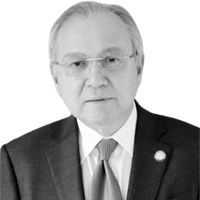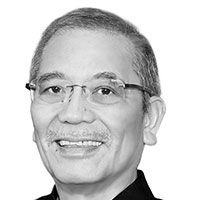Tea & serenity
With the Muslim holy month of Ramadan – a period of fasting, reflection and community – just ended and the Christian Holy Week coming up, it’s a good time for reflection, for introspection. As malls shut down for two days next week, Maundy Thursday and Good Friday – our office closes and our presses stop running for these two days as well – perhaps we should shut off our devices and gadgets too, for a little quiet time, so we don’t jump and automatically reach for our phone at the sound of every ping and ring. Give yourself a rest from those inane TikTok and YouTube posts and vlogs.
Last week I came across a video feature on BBC of a tea master, who talked about sakura, the tea ceremony and the applications to life in general. Yoshitsugu Nagano is the youngest (he is only 37) to be certified as Bondatedaitenmoku, the highest rank in the Ueda Soku School of Samurai Tea Ceremony, practised in Hiroshima for over 400 years. Surprisingly, he has been immersed in the tea ritual for just over a decade. Now based in New York, Master Nagano lectures on and conducts tea ceremonies mostly in New York City and Japan.
It’s sakura season, despite “global weirding” – a new term my friend from New York shared with me about the freaky sunny yesterday-freezing today weather they were having – throwing seasons and cycles off kilter, and many Pinoys are heading to Japan, not just for the cherry blossoms but for the many other delights Japan has to offer.
The tea ceremony – more accurately, it is the “Way of Tea,” or chado, with the kanji (or Chinese) characters cha (tea) tao (way, the same character for Taoism) – is reported to have started with the samurai, a ceremony held before the warrior went out to battle, significant since it could very well be the last cup of tea the warrior would have. To those of us raised on über-macho war movies featuring battle-hardened soldiers getting drunk and rowdy in cheap bars, warriors having a cup of tea before going to battle is an oxymoron.
But the samurai, with the code of Bushido governing his life, was not just a warrior but, in a very real sense, an artist as well. The deliberate and intricate process of the tea ceremony – which involves whisking the matcha or green tea powder into hot water (rather than steeping tea leaves, as the Chinese do, a process not as complicated) using simple implements (bowl, whisk, teapot) crafted by artisans – provided a change of perspective, a “higher level of concentration and serenity” before the warrior heads out to the frenzy and chaos of battle, not to mention facing the very real possibility of death.
With this in mind, and with the advent of spring and the ephemeral nature of the cherry blossom, Master Nagano spoke of the “beauty of change… the beauty of each season ending” and the “inevitable but not necessarily dreadful end of things.”
According to Master Nagano, there are four principles of the tea ceremony, and these can just as well be principles for life: quietness, concentrating on the now, finding beauty in simplicity and harmony.
Since watching that video I’ve been trying to practise what Master Nagano said. It’s not easy to find quietness in our chaotic world, not easy to be quiet in the metropolis when one is bombarded with honking horns, blaring music, people shouting, phones ringing. I think the trick – or the skill – is to be able to find – and be in – the quiet amid all the noise and cacophony of modern life; to tune out, if you will, even the white noise, and to tune in to self. That’s easier said than done, of course, especially when you’re in Metro Manila traffic and 17 motorcycles are squeezing all around you and the roving vehicle is blaring out the campaign jingle of some councilor or mayoral candidate. I am reminded of a line from the 1927 prose-poem “Desiderata,” very popular during the 1960s and 1970s: “Go placidly amid the noise and haste, and remember what peace there may be in silence.”
Concentrating on the now involves focus, which again means one has to shut out the distractions and concentrate on the one task before you. For people used to multi-tasking – and that is probably most of us – this is not easy and may even be considered inefficient. But sometimes focusing on one thing may actually turn out to be more efficient, since you get it right in one go.
I find the third principle – finding beauty in simplicity – the easiest and most enjoyable. I have my morning tea and breakfast on my balcony most mornings, when weather allows, and I have taken to cloud-watching, not to find recognizable shapes or figures but to appreciate how they mass and move. Some days there are hardly any clouds, and the expanse of sky comes in shades of blue only a true Artist can come up with. I try to ignore the layer of gray-brown that hangs over the city, and not think that that is the air you and I breathe in every day.
I don’t have to stop and smell the flowers to appreciate the profusion of blooms now that it is summer. The bougainvillea provide such a riot of color, and I wish we could have more of them in the center islands of our roadways. A wild sampaguita that grows on the sidewalk near the market I go to has begun to bloom, and last Sunday I picked some, put them in a bowl and they now perfume my room as I write this.
When all of the above come together, then there is harmony – in one’s life, between man and nature and, perhaps the most difficult, among men. Again from “Desiderata:” “And whether or not it is clear to you, no doubt the universe is unfolding as it should” – in harmony.
- Latest
- Trending






















